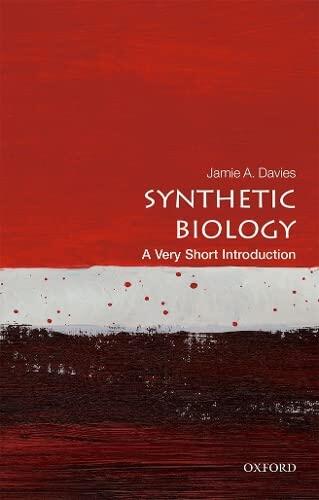
Synthetic Biology: A Very Short Introduction
No ratings yet
Science & Technology
Format
Paperback
Pages
144
Language
English
Published
Oct 1, 2018
Publisher
Oxford University Press
Edition
Illustrated
ISBN-10
0198803494
ISBN-13
9780198803492
Description
Synthetic biology is revolutionizing the landscape of science and technology in the 21st century, influencing various fields from medicine to environmental sustainability. With a clear focus on reengineering biological systems, it brings together biology, engineering, and computer science in innovative ways. Jamie A. Davies explores this dynamic discipline, shedding light on its key concepts and the implications it holds for the future.
Davies delves into the intricacies of synthetic biology, discussing its potential to create synthetic organisms and redesign existing ones for beneficial purposes. This interdisciplinary approach challenges traditional boundaries and raises important ethical questions surrounding the manipulation of life itself. The reader is invited to ponder the realities of creating new life forms and the responsibilities that come with such power.
As the field grows rapidly, its applications span from healthcare advancements, such as customized therapies for diseases, to environmental solutions like bioremediation. With clarity and insight, Davies illustrates the profound impact synthetic biology has on society, science, and the environment.
In the face of these advancements, the book urges careful consideration of the implications and responsibilities inherent to this emerging technology. By providing a concise yet comprehensive introduction, it serves as a valuable resource for anyone looking to understand the incredible potential and challenges presented by synthetic biology.
Davies delves into the intricacies of synthetic biology, discussing its potential to create synthetic organisms and redesign existing ones for beneficial purposes. This interdisciplinary approach challenges traditional boundaries and raises important ethical questions surrounding the manipulation of life itself. The reader is invited to ponder the realities of creating new life forms and the responsibilities that come with such power.
As the field grows rapidly, its applications span from healthcare advancements, such as customized therapies for diseases, to environmental solutions like bioremediation. With clarity and insight, Davies illustrates the profound impact synthetic biology has on society, science, and the environment.
In the face of these advancements, the book urges careful consideration of the implications and responsibilities inherent to this emerging technology. By providing a concise yet comprehensive introduction, it serves as a valuable resource for anyone looking to understand the incredible potential and challenges presented by synthetic biology.
Reviews
Reading Log
No reading logs found
Start tracking your reading progress to see logs here
Add Your First Reading LogNotes
Transaction Log
No transaction logs found
Start tracking your book transactions to see logs here
Add Your First Transaction Log